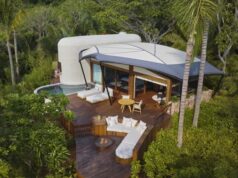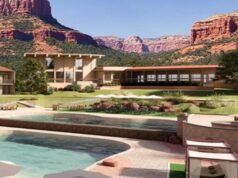 NATIONAL REPORT—It will be at this year’s Greenbuild International Conference and Expo (November 20 to 22 in Philadelphia) that the U.S. Green Building Council’s (USGBC) Leadership in Environmental Design (LEED) v4 will be introduced. For the hospitality industry, the rollout will be significant. It will be the first time that there will be hospitality-specific adaptations of LEED: LEED Hospitality-New Construction, LEED Hospitality-Existing Buildings, and LEED Hospitality-Commercial Interiors. The adaptations are the result of many years of conversations and input from LEED stakeholders in the hospitality community. Some of that input can be found among the more than 22,000 comments that were submitted to USGBC from all industry sectors during the LEED v4 development process.
NATIONAL REPORT—It will be at this year’s Greenbuild International Conference and Expo (November 20 to 22 in Philadelphia) that the U.S. Green Building Council’s (USGBC) Leadership in Environmental Design (LEED) v4 will be introduced. For the hospitality industry, the rollout will be significant. It will be the first time that there will be hospitality-specific adaptations of LEED: LEED Hospitality-New Construction, LEED Hospitality-Existing Buildings, and LEED Hospitality-Commercial Interiors. The adaptations are the result of many years of conversations and input from LEED stakeholders in the hospitality community. Some of that input can be found among the more than 22,000 comments that were submitted to USGBC from all industry sectors during the LEED v4 development process.
For hospitality, LEED v4, according to Rhiannon Jacobsen, Director, Strategic Accounts, USGBC, and Corey Enck, Director of Technical Development, USGBC, is an improvement when compared to LEED 2009 but still a version expected to evolve in the coming years. In fact, Jacobsen told Green Lodging News that USGBC intends to form a hospitality user’s group in early 2014 that will allow hospitality industry stakeholders to frequently provide feedback on LEED v4.
“The manufacturing industry had similar challenges two years ago,” Jacobsen says. “We created a LEED manufacturing user’s group.”
According to USGBC, LEED v4 builds on the fundamentals of the past while offering a new system that prepares all LEED projects in a portfolio to perform at a higher level. LEED v4 also provides a new suite of time-saving support tools designed to help streamline the certification process.
Number of Forms Reduced Substantially
“We have reduced the number of forms,” Enck says. “For LEED 2009 there are about 1,000 versions of forms. For LEED v4 there are about 200. We have tried to reduce form length by half and have reduced the number of items asked for on forms.”
The following are some additional improvements:
• Developing LEED reference guides in a variety of formats, including a forthcoming and entirely new web-based reference guide that will include online tutorials, videos and other useful resources to help project teams implement LEED.
• Scaling up the size and expertise of the LEED certification review team, managed by the Green Building Certification Institute (GBCI), which is responsible for assessing the quality of LEED certification applications and materials and granting LEED certification.
• Growing the LEED certification review team to include licensed engineers, architects and other specialty building professionals.
• Significantly investing in LEED Online to streamline and increase the reliability of the user interface, the central online portal for submitting documentation for LEED certification.
In the past there were parts of LEED that best fit commercial office buildings or residential spaces but not hotels. Enck says LEED v4 took those inconsistencies into account and now in some cases hotel projects are exempt from having to meet certain requirements.
With LEED 2009, some hotel projects would have had difficulty qualifying for a Development Density credit—a reward for locating in a densely populated area near residential development. In LEED v4, however, being close to residential development is no longer required to get that credit. A hotel’s closeness to other commercial establishments can now earn it a credit.
In another example, in the process of earning a lighting pollution credit, LEED 2009 treated hotels like other commercial properties, requiring them to have shading in windows to prevent interior light from spilling out. In a hotel, of course, it is the guests who control most interior lights and shading. USGBC eliminated the requirement for hotels.
“The lighting pollution credit changed broadly but was initiated by hospitality,” Enck says.
Additional adjustments to LEED were also made to better accommodate hotel projects.
Phased Approach to LEED v4
Once LEED v4 is unveiled at Greenbuild, teams will be able to register their projects under the new system and access the tools and suite of resources that support it. USGBC is taking a phased approach to LEED v4. This means that rather than requiring all projects to use it right away, USGBC is giving the marketplace time to become familiar with the concepts and theories that it’s based on. Project teams can register their projects under LEED 2009 until June 1, 2015.
In spring 2014, USGBC will update the LEED AP exams to include information on LEED v4 and other updates in the world of green building. There will be no distinction in versions of the credential, so current credential holders do not need to retest.
USGBC is developing three webinars to help educate the building industry on LEED v4. Click here for more details.
Glenn Hasek can be reached at editor@greenlodgingnews.com.







